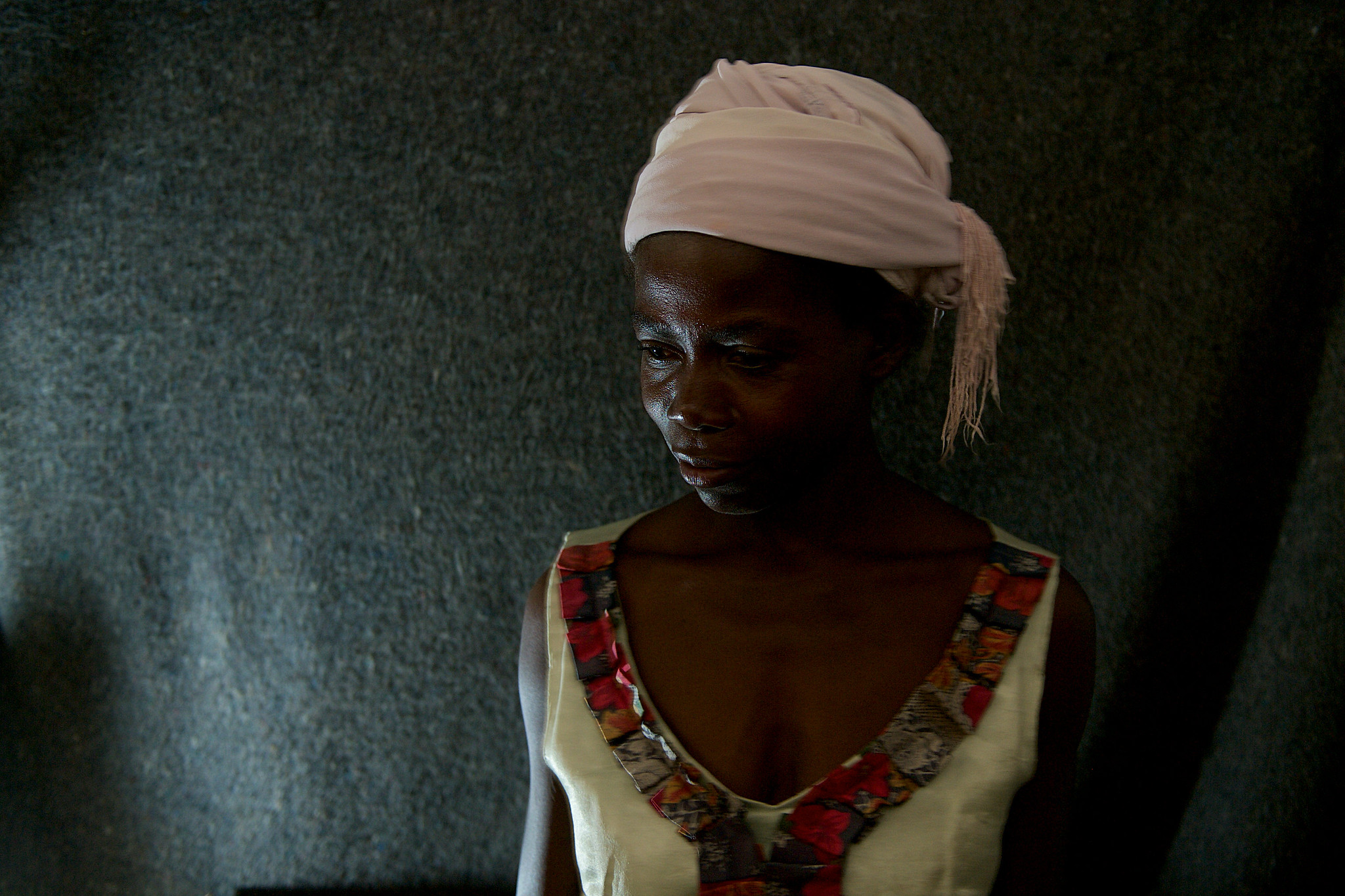With COVID-19 throwing a spotlight on both social protection and gender-based violence, experts from the FCDO- and GIZ-funded SPACE initiative – Lara Quarterman and Amber Peterman – explore some of the ways these topics intersect. This blog will set out core considerations for programming that integrate social protection with violence prevention or response, and highlight the importance of using this crisis as a chance to better understand these links.
The COVID-19 pandemic has raised the profile of both social protection and gender-based violence (GBV) on the global policy agenda, a welcomed development. Stakeholders are increasingly recognising the inter-relation of these two issues – and while there are many intersections, a few stand out:
1. There is growing evidence that social protection – primarily in the form of cash transfers – can reduce women’s experience of intimate partner violence (IPV) inside the home.
2. GBV actors are increasingly using social protection as an important component of programming for survivors of violence – to help facilitate access to services, including payment of fees and transportation costs.
3. GBV actors in the humanitarian sphere have long recognised the need to address risks of Sexual Exploitation and Abuse (SEA) within the programmatic delivery chain, including, but not limited to women’s exposure to harassment or exploitation at cash transfer payment points.
4. Due to detrimental effects on health and wellbeing, social protection programming may face challenges and limitations in uptake and success when GBV remains unaddressed.
In short, while social protection and GBV actors are often siloed, there is good reason to bring them together—for programme success, harm mitigation, and importantly, the wellbeing and freedom from violence of the ultimate stakeholders: men, women and children themselves.
As part of the Social Protection Approaches to COVID-19 Expert Advice helpline (SPACE) team, we are tasked with helping governments, as well as humanitarian and development partners, make quick decisions on gender and social inclusion within the COVID-19 response. We are increasingly being asked “What can we do to address GBV within our social protection response?” This is an encouraging trend, as GBV is already widespread in many settings, affecting poor and vulnerable populations at disproportionate levels—and evidence suggests risk factors are likely to increase during COVID-19. Fortunately, there are resources to draw on from both the GBV and social protection sectors, both in designing core social protection components, as well as thinking about additional systems linkages and plus programming. This blog summarises some of the “quick wins” in terms of responding to GBV risks, including SEA, as well as measures that can support longer-term violence prevention efforts.
Where to start? Quick wins for integrating GBV into social protection during COVID-19
- Conduct or identify an existing contextual GBV risk analysis that uses available information and data to understand where risks intersect with programme operations; use this analysis to inform that the design and implementation of programming to explicitly mitigate GBV risks;
- Ensure your social protection field staff have basic skills and resources to identify, refer and mitigate against GBV when they encounter cases in their work – through training and capacity building, either using available tools or through access to specialised technical support;
- Liaise with GBV actors to understand the availability and accessibility of free or low-cost GBV services in targeted areas. Provide information on GBV services to cash recipients at touch points, for example flyers or visual posters with helplines information – or by word-of-mouth from distribution agents;
- Include a GBV specialist as a member of the social protection team who can provide technical advice during design, implementation and monitoring of social protection interventions;
- Consult with women, through women-led organisations or other existing networks, to gather their input into the design and implementation, particularly on key design components (targeting, adequacy, transfer modality, cash plus components);
- Monitor risks of violence within post-distribution monitoring or routine spot checks, in coordination with GBV specialists in a way that is confidential, safe and maintains dignity of survivors.
Leveraging systems and programmes for longer-term prevention of gender-based violence
- Identify opportunities to integrate GBV information, awareness and messaging into social protection programming, which could include communication campaigns addressing harmful social norms that perpetuate violence, related training sessions or via radio or community messaging;
- Consider opportunities to link existing GBV programming to social protection systems or run social protection plus-programmes, including integrated case management for women and families, mental health and psychosocial programmes, engaging men and boys or programming to enhance women’s economic or social status—drawing on what works to prevent GBV;
- Coordinate with GBV service providers to expand benefits to and prioritise enrolment of survivors in social protection schemes;
- Monitor and continually assess risk of GBV in implementation, especially before decisions to expand or contract existing programming. Shifts in the modality used, implementation design or from emergency cash distribution to longer term social protection approaches can have implications for violence risks (or preventive effects) and should be assessed as COVID-19 responses evolve and change.
Getting our own house in order: Safeguarding recipients against sexual exploitation and abuse
- Implement police record and reference checks for social protection and GBV staff, especially for those in direct contact with social protection recipients;
- Ensure gender balance of programme staff, with an equal number of men and women at all levels of seniority;
- Put in place an interagency complaints or grievance reporting system and include all relevant actors involved in social protection and GBV programming; Implement a standard protocol for investigation by appropriate authorities in a manner that is survivor-centred and protects confidentiality, privacy and dignity of survivors;
- Put in place whistleblowing protections for individuals that report their safeguarding concerns;
- Provide social protection recipients with information in an accessible format on how to make reports of SEA through available complaints or grievance mechanisms and support to participate in subsequent investigations, including case management and psychosocial support;
- Implement appropriate disciplinary actions against those found to have committed SEA; Make all programme staff aware of these consequences and policies in advance. For example, through employment contracts that outline what constitutes misconduct, including SEA, and that stipulate violation will result in termination of employment or consultancy and appropriate legal action;
- Incorporate SEA into monitoring plans, including measures to determine if institutional safeguards are working effectively, with periodic review;
- Provide social protection and GBV staff members with resources to mitigate against vicarious trauma, mental health hardship and address GBV they may have witnessed or experienced during or outside of work.
Where next? Breaking down silos to enhance collective impact
Expanding social protection is not incongruent with maintaining and enhancing GBV prevention and response programming. Bringing these two areas of intervention closer together and working in coordination can improve the overall impact of both, as well as the response to COVID-19.
While our blog has focused on GBV, this is one of many important elements to consider in the effort to promote gender equality and social inclusion through social protection. Doing so can remove barriers for the inclusion of all those in need of assistance and work towards transformational programming in times of crisis.
There is still a lot we do not know, such as the potential for social protection to prevent certain forms of GBV such as early and forced marriage or non-partner sexual violence, or the impact of cash-based interventions on GBV in sudden onset emergencies.
We see COVID-19 as an opportunity to highlight the importance of expanding the evidence base to these and related topics, including via practice-based learning. In the meantime, we have a wealth of guidance and expertise from social protection and GBV practitioners, and more importantly lifetimes of lived experiences from the women and girls affected most by COVID-19. We can and should be drawing from this rich knowledge base to improve and innovate in the way we deliver both social protection and GBV programming.
***
Lara Quarterman is an independent consultant on social protection and gender. Amber Peterman is an associate research professor in Public Policy at UNC Chapel Hill.
The Social Protection Approaches to COVID-19: Expert Advice Helpline (SPACE) is implemented by the UK Foreign, Commonwealth and Development Office (FCDO) and Deutsche Gesellschaft für Internationale Zusammenarbeit (GIZ) GmbH, and funded by UK Aid and the German Federal Ministry for Economic Cooperation and Development (BMZ). More of our publications can be found here. The views expressed in this document are entirely those of the authors and do not necessarily represent FCDO or GIZ views or policies.
We would like to acknowledge the gender and inclusion SPACE team members, including Rebecca Holmes, Elayn Sammon, Courtney Cabot Venton and Laura Alfers, Clare McCrum, Charlotte Maugham and conversations with members of the Cash Transfer and IPV Research Collaborative, which this blog draws on.






